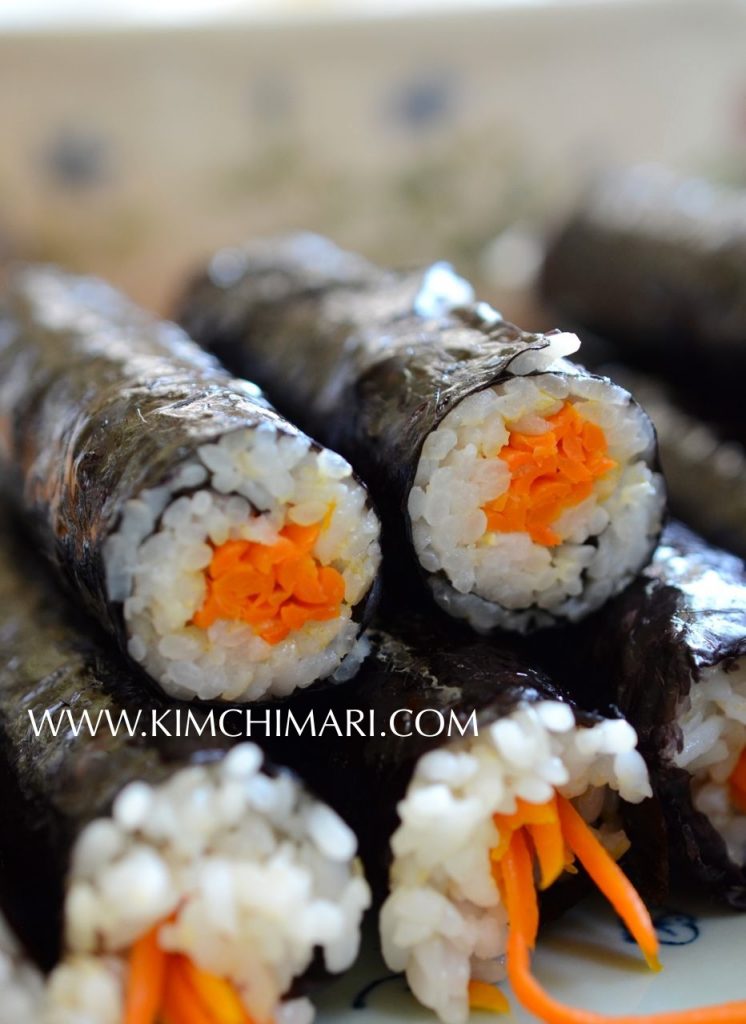
During my stay in Korea, I got to taste a special kind of mini Kimbap also called Mayak (마약) Kimbap at Seoul’s Kwangjang Sijang (광장시장). Mayak means “drugs” which refers to the fact that this kimbap is soooo good that you just can’t stop eating once you get a taste of it and keep going back for more.. Hmm.. it is very good…not sure if it’s THAT good??? haha..But as I was eating it, I thought about what makes this mini kimbap different? I think unlike many Korean dishes where it uses many ingredients – as is the case with the traditional Kimbap which uses at least 5 or more stuffing ingredients, this kimbap has one and only ONE – CARROT. As we often say, less is more and it’s the same way with food sometimes.
Now, Kwangjang Sijang/shijang is one of three oldest open markets in Seoul. It first opened in 1905 in the area between the streets of jongro 4th and 5th and cheong gye cheon. Between 1950-1970, it was mainly a big market for clothing and fabrics. After year 2000, an Eat Street (먹자골목 Meokja Golmok) developed in the center of the market and has been a popular destination for young Koreans and foreign tourists alike. Currently there are over 5000 stores and more than 20,000 people work inside Kwanjang Sijang today.
I have searched online a little bit for this mini kimbap or mayak/drug kimbap and I am not sure why but I see that most recipes have at least 3 stuffing ingredients in them – carrots, pickled radish, spinach…I don’t understand.. that’s NOT the mayak kimbap I had at the Kwangjang market. And I know I went to the original place. This is a great vegan, vegetarian dish and also great for kids!
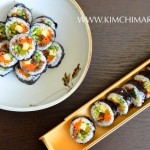
*** See my regular Kimbap post (click left pic) for more details on how to make or roll Kimbap
Mini Kimbap (Mayak Kimbap) Two Ways
Servings: 4-6 Cooking Time: 1 hr (includes time for making 12 rolls) Difficulty: Moderate
Ingredients
- 3 short grain rice cooker cups (2 1/4 US cup or 600 g) rice, cooked
- seasoning for rice
- 2~3 T rice vinegar
- 1 T + 1 tsp sugar
- 1 tsp sea salt
- 2 large carrot, julienned
- 1/2~1 tsp sugar
- sesame oil
- sesame seeds
- salt and pepper
- vegetable oil
- OPTIONAL – 3 persian cucumbers, cut into quarters lengthwise
Sauce – this is the KEY to this recipe!! :)) This soy mustard sauce is a MUST!
- 1 T soy sauce (진간장 jinkanjang)
- 2 tsp rice or white vinegar
- 2 tsp sugar
- 1 tsp honey
- 1/2 tsp yellow mustard (mix powder and water, let it sit for 5 min)
- 1/2 tsp yellow mustard powder
- 1/2 tsp water
*** See my Kimbap post for more details on how to make or roll Kimbap **
- Cook rice in rice cooker or in pot. Try to make rice on the dry side by adding a little less water.
- Julienne carrots. I used a mandoline slicer. Saute carrot on medium heat in a pan with some oil. After sauteeing for few minutes, when the carrots are almost cooked, season with salt and pepper and about 1/2 tsp to 1 tsp sugar. Carrots should not be mushy. Transfer to a plate and let it cool.
- Make yellow mustard – you can buy the dry yellow mustard powder and make a paste by mixing water and powder – 1:1. You can also just use the yellow mustard tubes you buy. Personally, I don’t think it’s as flavorful and spicy as the one you make from powder but it’s up to you.
- Optionally, cut persian cucumbers into quarters, lengthwise. You can also use english cucumbers: cut them into 8-9 in/ 24 cm length sticks about 1/2 in thick.
- Make Soy Mustard (겨자간장 Gyeoja Kanjang) by mixing soy sauce, vinegar, sugar, honey and the yellow mustard from 3. See my Jellyfish Salad post for more info on how to make Korean yellow mustard.
Korean soy mustard sauce (겨자간장 Gyeoja Kanjang) for Mayak Kimbap - Make the rice seasoning by mixing vinegar, sugar and salt.
- Once rice is cooked, transfer to a bowl and while the rice is still hot, add the vinegar seasoning. Mix the rice well while cooling it down. Taste rice and adjust seasoning to your taste.
- Make mini kimbap by laying out the dried nori (gim) on the bamboo sushi rolling mat. Because we are making mini kimbap and the stuffing is just carrots OR cucumber, use as little rice as possible.
Mini carrot Kimbap – making rice seaweed roll
Mini mayak kimbap ready to roll See my Kimbap post for more detailed instructions on how to roll kimbap or watch the video at the end of this post.
- And that’s all you need to make the most delicious Korean mini Kimbap or Mayak Kimbap!
- Do the same with Cucumber roll, just put cucumber instead of carrots.
Tips on How to Roll Kimbap or Sushi
- When spreading the rice on the nori/gim, the rice will stick to your fingers like crazy!!! Prepare a small bowl with water and wet your hands before you spread the rice. They will now stick to the nori not your hands. Also, if you have a few rice grains on your fingers, spread them throughout the nori (into the area above where the rice mainly is) so that it can work as a glue when you roll the kimbap/sushi.
Tips on serving Mini Kimbap or Mayak Kimbap:
- I decided to make these for my recent Korean dinner party for my non-Korean friends who were total beginners to Korean food. Everyone loved it because the taste is very simple and mild and it also paired wonderfully well with Korean BBQ.
- To serve, I used a rectangular dish and laid out the carrot mini kimbap in the center and the green cucumber mini kimbap on the outer edges. Koreans usually don’t serve the outer edges where the stuffing sticks out but I used it right in the center row to give it some height. I think it came out quite pretty – if I say so myself.. 😉 Remember to serve with the wonderful Soy Mustard sauce and it will be a hit!!
Mini Kimbap two ways – with carrots and cucumbers
Mini Kimbap tray – kimbap two ways
Mini Kimbap with carrots aka Mayak Kimbap
Ingredients
- 3 short grain rice cooker cups (2 1/4 US cup or 600 g) rice, cooked
Seasoning for Rice
- 2 Tbsp rice vinegar + 1 Tbsp (optional)
- 4 tsp sugar
- 1 tsp Sea Salt (Trader Joe's)
Carrots
- 2 large carrot , julienned
- 1/2 tsp sugar + 1/2 tsp (optional)
- sesame oil
- 1 pinch sesame seeds
- salt and pepper
- vegetable oil
Sauce
- 1 Tbsp soy sauce (진간장 jinkanjang)
- 2 tsp rice or white vinegar
- 2 tsp sugar
- 1 tsp honey
1/2 tsp Yellow Mustard (mix powder and water, let it sit for 5 min)
- 1/2 tsp yellow mustard powder
- 1/2 tsp water
OPTIONAL - 3 persian cucumbers, cut into quarters lengthwise
Instructions
- Cook rice in rice cooker or in pot. Try to make rice on the dry side.
- Saute julienned carrots on medium heat in a pan with some oil. After sauteeing for few minutes, when the carrots are almost cooked, season with salt and pepper and about 1/2 tsp to 1 tsp sugar. Transfer to a plate and let it cool.
- Make Soy Mustard (겨자간장 Gyeoja Kanjang) by mixing soy sauce, vinegar, sugar, honey and yellow mustard.
- Make rice seasoning by mixing vinegar, sugar and salt.
- Once rice is cooked, transfer to a bowl and while the rice is still hot, add the vinegar seasoning. Mix the rice well while cooling it down.
- Make mini kimbap by laying out the dried nori (gim) on the bamboo sushi rolling mat. Use as little rice as possible to ensure you will have *mini* kimbap.
Tips & Notes:
- To prevent rice from sticking to your fingers when spreading the rice on the nori/gim, prepare a small bowl with water and wet your hands before you spread the rice.
- Also, if you have a few rice grains on your fingers, spread them throughout the nori (into the area above where the rice mainly is) so that it can work as a glue when you roll the gimbap/sushi.
Nutrition Information:
How to store and reheat Kimbap
Storage – Leftovers can be refrigerated in an airtight container up to a few days.
Reheat – Yummy way to reheat is to pan-fry them in sesame oil on medium low heat. But since these are in rolls, I would recommend slicing them into discs and then heating them in pieces. Be patient, cook for few minutes and let it brown to a crisp on each side. Or, you can whip up and egg and dip the Gimap in egg and then pan-fry on each side for a treat!
Reheating Kimbap this way is so delicious that we sometimes like to do it on purpose!

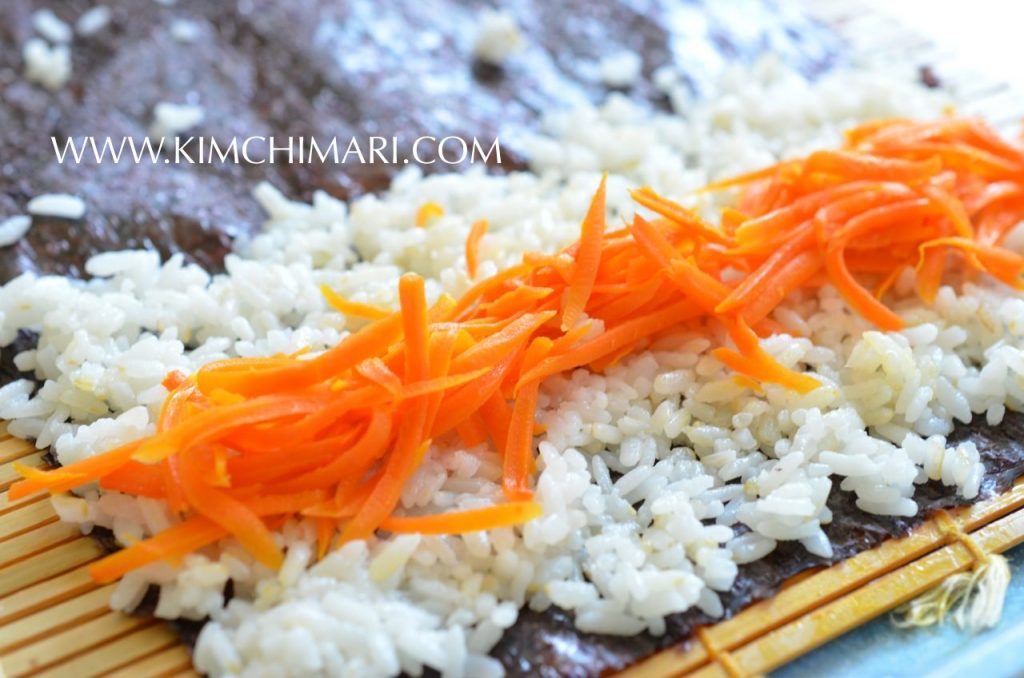
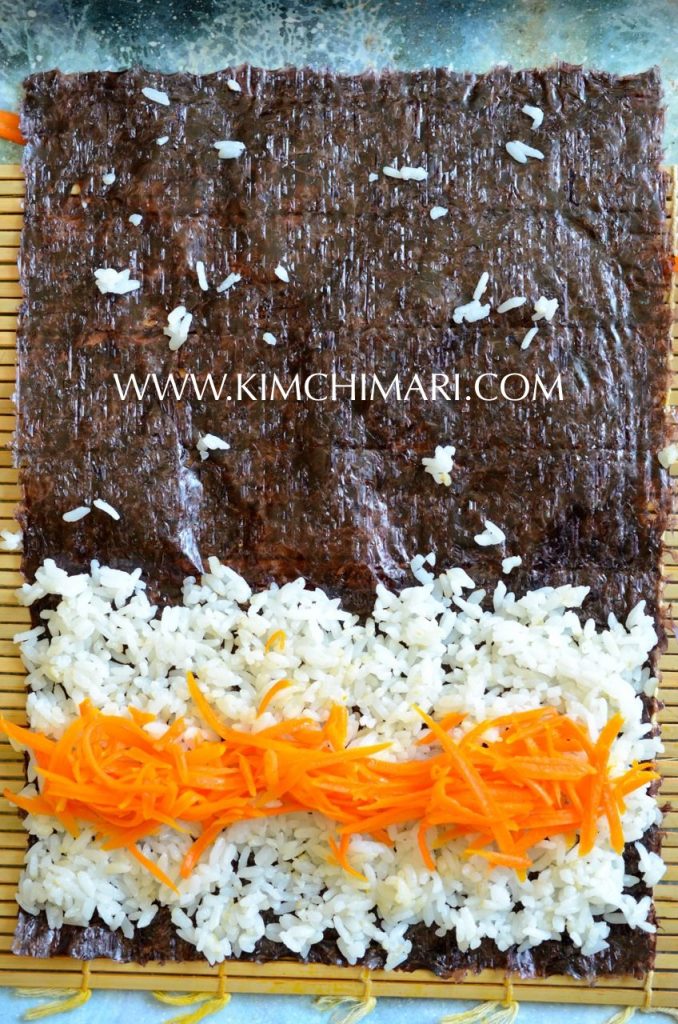
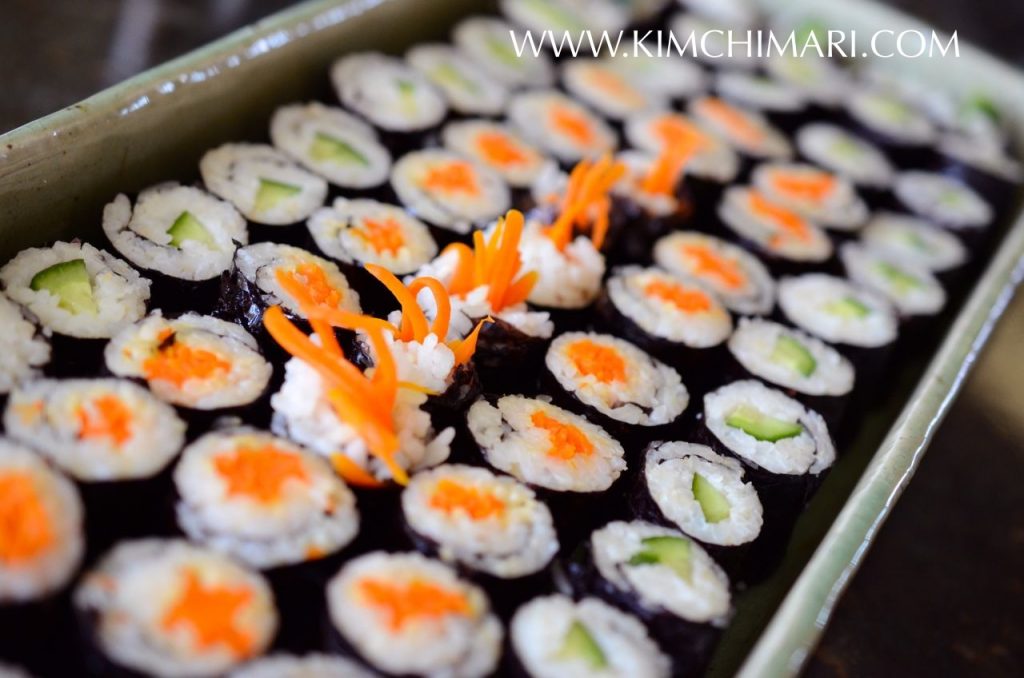

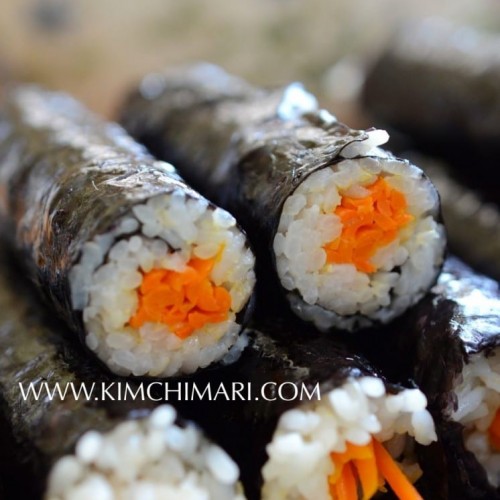

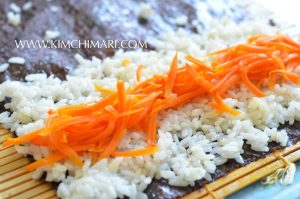
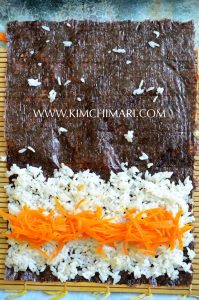
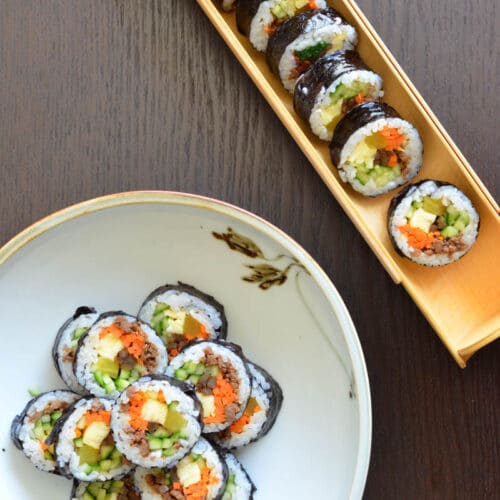
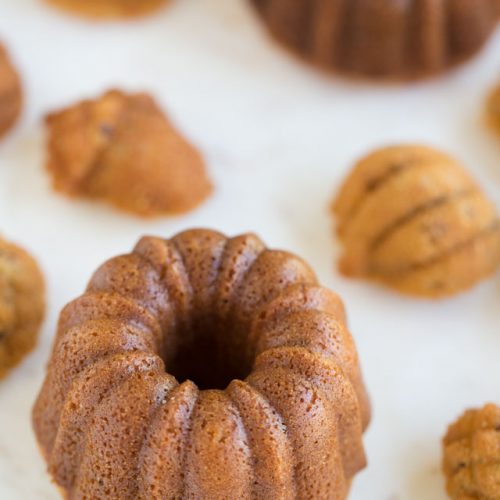
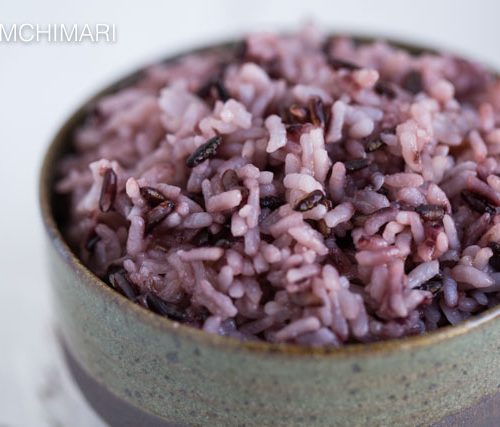
















I never ate kimbab with sauce– it was a no-fuss food for lunch on the go, and easy to eat with hands (I never learned to use chopsticks correctly since in the U.S. a fork is more commonly used, and hands are sometimes just easier). The condiment was the pickled radish, dakgwang, in Japanese is how I learned it and its hangul name wasn’t used, danmuji? I love how simple, wholesome, and delicious kimbab is. This mayak kimbab is another twist to humble kimbab. I don’t usually see mustard in Korean food. Is it from Chinese food influence? Thank you!
Yes, the pickled radish is Danmuji 단무지. So one could say the origins of mustard goes back to China and Africa but there are records in Korea that go back as far as 3000 years in a book called 의례儀禮 that talks about serving mustard with raw fish. And there are records that also go back to 16th century that talk about 겨자장 mustard sauce being served so I think we can safely say it IS part of Korean cuisine. But you are right, it’s not used as extensively as gochujang but certainly ‘mustard soy sauce’ have been used all the time in Korean cooking but more so in royal cuisine which is why you may think you have not seen it much. Gujeolpan, my chapssal bulgogi are some dishes I can think of right now that uses it. Thanks for asking!
Oh and in terms of sauces with kimbap, yes, it’s not a standard thing but many Koreans eat Kimbap with gochujang and this addition of gyeojajang 겨자장 with mini kimbap is definitely are recent trend – at least in Seoul anyway.
Could you use avocado in this? I can’t wait to try it
Sure – you could! Enjoy!
This recipe looks and sounds great! For the soy mustard sauce it says to add 1/2 tsp of yellow mustard by combining the mustard powder and water,and then below it, it says 2 tsp yellow mustard powder and 2 tsp water. Do I add the 1/2 tsp mixture and then add 2 tsp powder and 2 tsp water?
Oh so sorry for the confusion. What I meant was to make the mustard by mixing the powder and water. And then use 1/2 tsp of that mixture. I should have made that more clear. Let me know if you have more questions! thank you
Can I use seasoned rice vinegar instead adding sugar and salt to rice vinegar?
What does your seasoned rice vinegar contain? It’s hard for me to tell you without knowing the contents. If it tastes like it’s a good balance of sweet, sour and salty, and it says it’s for sushi rice, you can use it instead. Good luck
Beautiful!
thank you!